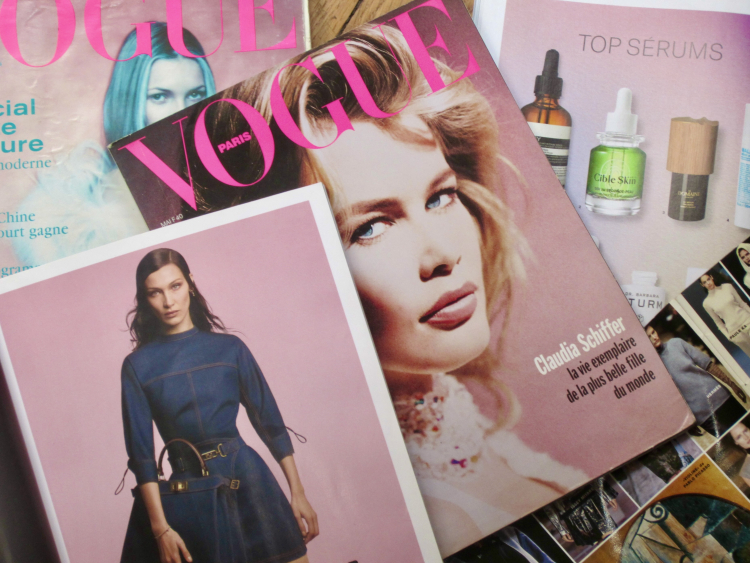The Desire to Change Attire

New fashion trends are emerging at an increasingly unattainable rate. When I scroll through my social media feed, there always seems to be a new trend or “must have” item. Why are people so quick to follow the next “hottest” trend when, more often than not, it is just an old trend rebranded with a new and catchy label?
I recently came across the term "fashion impulse.” Coined by Jennifer Craik in her book, Fashion: The Key Concepts, she defines this phenomenon as “constantly changing clothing codes and stylistic registers.” In simpler words, a fashion impulse is our desire to change attire. The universal aptitude to evolve personal preference and dress is now summed up in a short and catchy phrase. But how is the fashion impulse seen in everyday fashion life? Social media has conquered all corners of the globe and seemingly no person is completely unreachable. This mass interconnectedness has inevitably allowed for trends to travel at a newfound, breakneck speed and micro-trends are at their height in modern fashion culture. The rate of the modern fashion impulse and trend culture is neither perennial nor sustainable.
In the past year, a number of trends have taken over the internet. Some of the most prominent include ballet core, quiet luxury, coastal grandmother and the latte trend. Beauty influencers recreated a viral Hailey Bieber bronzed makeup look, dubbing it “latte makeup.” However, Hailey’s makeup look was far from revolutionary. Consisting of warm browns and neutral tones, this “latte makeup” has been around for decades. Yet, it became a trend on TikTok to recreate Hailey’s look using the new latte label.
Pinterest’s annual trend forecast claimed that “eclectic grandpa” is the newest 2024 style craze. As seen worn by celebrities including Harry Styles, Gigi Hadid, and Kendall Jenner, this style is all about knits, tweed, blazers, trousers, loafers, and all things vintage. As Hannah Jackson notes in a Vogue article, the problem with this is that, “as with all micro trends, one is supposed to accumulate these items seemingly overnight.” Jackson points out that grandfathers, who are the blueprint for this trend, have collected their pieces over decades, pieces that were made durable and long-lasting. People who feel the urge to go all-in to the latest trending style cannot sustainably accumulate the same pieces that it took others a lifetime to curate. Corporations are trying to mass produce clothing in time to keep up with the ever-changing media.
To get a better understanding of how modern media has impacted one's fashion impulse, I asked three students for their thoughts and opinions on the topic. Lainie Brassell, sophomore at Florida State University, notes that her desire to change her style is quite frequent. However, this desire is trumped by the time and money necessary to transform her wardrobe. Lainie states, "influencers or celebrities usually wear things that are too expensive for me. I do get tired of my style, but I think it's because I don't have a style. I wear leisurely clothing, almost pajamas, to class everyday." Similarly, Haley Adams, a student at Middle Tennessee State University, says, "I love a good comfy fit, but I do get the desire to dress better. I want to dress like a boho-hippie, but also classy and cute. I get tired of my laziness a lot." Though the desire to emulate trends is still extremely prevalent amongst American college students, comfort continues to be the top priority for many.
The students I spoke to agree that social media is the driving force for trend transmission. When asked if he was more likely to follow a trend if it is worn by a celebrity or influencer, Kaetanno Fernandes, a student at the American University of Paris, claimed, "Who isn't? We like certain celebrities or influencers that we can see ourselves in, or a version of ourselves that we want to become. That is why influencers exist and people follow them. If anyone answers no to this question, they are lying."
Today, consumers are constantly bombarded by adverts claiming that their product is needed in order to be "trendy" or "cool". Adverts are by no means new, but social media has now made them virtually impossible to ignore. Constant exposure and access to content created by corporations (and influencers or celebrities sponsored by them) has rapidly accelerated the average consumer's desire to change their appearance. As debates around the environmental and humanitarian impact of disposable fashion are ongoing, the future of trend culture and one's fashion impulse is put into question.







